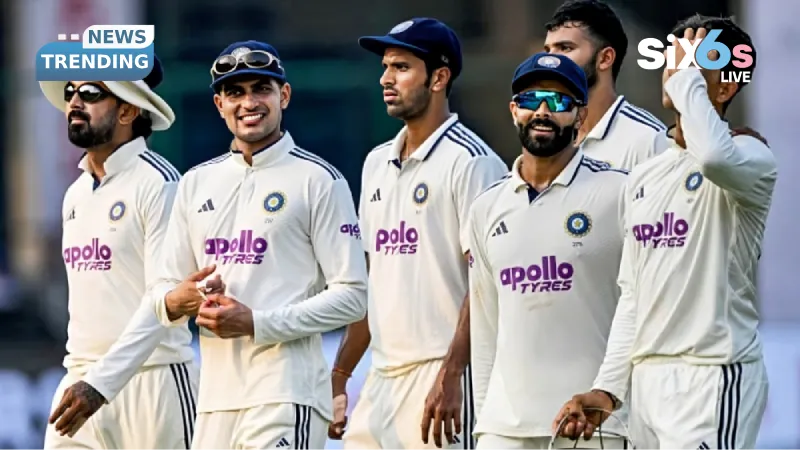When Shubman Gill walked out in Delhi, he had the attitude of a man needing no approval. The strokes were elegant, the calls were fortunate, the side was distinctly his. A year ago, Gill was only acquiring the first principles of being a Test cricketer. Now he is creating the Test future of the Indian side with the nonchalance of a veteran. The question is whether he can lead, not whether India can afford to look back. How on earth did Gill’s unobtrusive manner suddenly spring into the most certain Test personality in India since the early days of Kohli?
A Series Win That Meant More Than Just Points
India’s 2-0 victory against West Indies at home may seem like a subdued front-page affair, but under the surface, it was a statement series. It was Gill’s first full Test series as captain in India, and by the end of it, he ticked every box that the management had drawn up. The series fetched 24 important WTC points, but more importantly, clarity on the next generation of India: Sai Sudharsan’s grit, Kuldeep Yadav’s re-identification, and Nitish Reddy’s quiet promise. After years of trials and transience, India’s new core seems to have established ownership – and may have been because of Gill’s calm stewardship.
The New Calm: When Captaincy Found Its Balance
Gill’s leadership style can be explained not in terms of boisterous voice-backs and mid-field huddles, but rather by a sort of calm amidst chaos. Gill’s field changes are subtle, his pronouncements have a ring of reason, and, most refreshing of all, he is devoid of ego. Ian Bishop railed against him for being “a tad reactive”, but Gautam Gambhir, India’s coach and unlikely philosophical ally, disagreed. “He has surpassed the hardest assignment of all in England”, said Gambhir, referring to the five-Test grind earlier in the year. That these toughnesses have taught Gill a lesson for Gill is evident in the fact that he sees a captain in whites not as one who chest-thumps but, rather, believes control, faith, and timing are a captain’s weapons.
Backing the New Blood: Risk Meets Reward
In a cricket culture where patience too often translates to preference, Gill’s backing of the younger ones has been marked. Sai Sudharsan’s tentative start in Ahmedabad might have been the reason for the axe, but Gill did the opposite. The dividend? Scores of 87 and 39 in Delhi, the type of innings that goes a long way in upgrading promise to pedigree. Similarly, the inclusion of Nitish Kumar Reddy as an all-format investment was an act of foresight, the hint that India’s next all-rounder solution may not arrive with an acclaimed surname. And then, the ponderable Kuldeep Yadav – 12 wickets in two Tests, who has changed from being a `white ball mystery’ to an Indian red ball anchor in the post-Ashwin period.
Patterns Behind the Progress: Numbers That Whisper Confidence
The total success of India is clear to the naked eye in black and white. The top six averaged 54.2 in the two matches, the best home average since 2021. The strike rotation was better, few collapses. Kuldeep took 12 wickets at 17.4, the confluence of belief and form, while Ravindra Jadeja, in the full lot of all-round glory, scored 500 and more, and was Man of the Series, apart from being an excellent candidate for ICC Test Player of the Year. The stat said “clinic series win,” but the subtext of lesser dependency, wider contribution is what sustainable superiority is all about.
Key Takeaway:
Shubman Gill’s calm, data-driven, and quietly assertive leadership has given India’s Test cricket a new blueprint, one built on trust, balance, and tactical maturity rather than theatrics.
Stay updated on the latest cricket news and exciting updates at Six6slive. Dive into our in-depth articles and analyses to connect with the action today!
